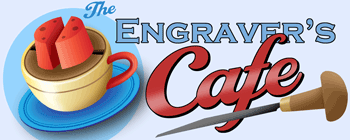Martin Strolz
Elite Cafe Member
Inspired by Sam´s drawing and post I also like to show and describe a drawing which is done in a different technique. I did this caricature of a friend as a birthday gift. The starting point was a good snapshot. I airbrushed another person out and converted it into black and white. PS offers some helpful features to distort a person´s face in a nice way making it look really typical…

The drawing was done with a soft pencil using lines mainly. You may notice that the pencil was not sharp most of the time in order to obtain a relatively wide line. Under my drawing paper I put several sheets of paper in order to get a soft surface property. This allows feathering and a good transition to white parts or other layers of lines. I almost always arrange the lines in layers as I would do when shading an engraving. The direction of the layers underlines the surface shape. With lines one also can describe the surface structure and material. Sometime dots or single lines above the layers are needed.
This line technique is not employed for the hair, beard, eyebrows and eyes. Finally I use some lateral pencil action or wipe a bit to get the desired result e.g. on the lips, the nose tip, the chin. The ear and hair is not really well detailed, but I do not care as this is not needed for the overall expression.
Color must be translated in a gray tone. For this the distance between lines and pencil pressure is most important. I hope the the enlarged cutouts explain the drawing technique well enough. The pictures were sharpend slightly (for clarity) after scaling down. Thus on screen the drawing looks a bit harder the the original drawing. The detail pictures are better in this respect.
Martin
The drawing was done with a soft pencil using lines mainly. You may notice that the pencil was not sharp most of the time in order to obtain a relatively wide line. Under my drawing paper I put several sheets of paper in order to get a soft surface property. This allows feathering and a good transition to white parts or other layers of lines. I almost always arrange the lines in layers as I would do when shading an engraving. The direction of the layers underlines the surface shape. With lines one also can describe the surface structure and material. Sometime dots or single lines above the layers are needed.
This line technique is not employed for the hair, beard, eyebrows and eyes. Finally I use some lateral pencil action or wipe a bit to get the desired result e.g. on the lips, the nose tip, the chin. The ear and hair is not really well detailed, but I do not care as this is not needed for the overall expression.
Color must be translated in a gray tone. For this the distance between lines and pencil pressure is most important. I hope the the enlarged cutouts explain the drawing technique well enough. The pictures were sharpend slightly (for clarity) after scaling down. Thus on screen the drawing looks a bit harder the the original drawing. The detail pictures are better in this respect.
Martin











